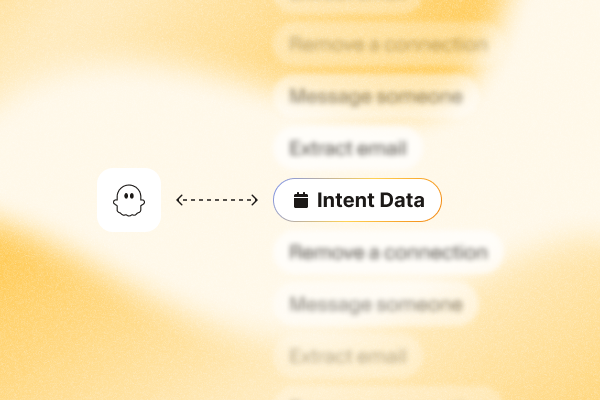Struggling to hit your lead generation targets? Intent data can help you identify prospects who are already interested in solutions like yours, making it easier to close them.
In this post, we’ll explain how intent data can sharpen your lead generation efforts and explore the best tools to get started.
TL;DR
- Intent data shows who’s actively interested in your product or service based on their online actions, like searches, content engagement, or specific tech usage.
- There are various types of intent data: first-party (from your own site), public third-party (from social platforms), bidstream (from real-time advertising), and co-op (shared across networks like Bombora).
- With intent data, you can improve your sales and marketing strategies by scoring leads, personalizing outreach, and building more detailed customer profiles based on social media activity.
- You can also optimize your targeting and acquisition efforts with intent-driven insights. For instance, you can create highly targeted marketing campaigns by improving your website copy, building LinkedIn PPC audiences, and using account-based marketing (ABM).
- To get buyer intent data, you can use intent data providers like ZoomInfo, Apollo, Bombora, or LeadIQ (for bidstream data), or prospecting and enrichment tools to scrape and export real-time data from LinkedIn based on intent signals.
- PhantomBuster is the best choice to scrape LinkedIn intent data, enrich your CRM with bi-directional HubSpot integration, and leverage AI insights to uncover potential buyers pain points and interests, making your outreach more targeted and effective.
What is intent data?
Intent data shows who’s interested in your product or service based on their online actions. It’s like getting early signals when someone is actively looking into something related to what you offer.
These signals can come from various sources:
- Search intent data: Keywords people use, revealing what topics or products they’re researching.
- Engagement data: Interactions with your content, such as clicks, downloads, or time spent on your site.
- Firmographic data: Information about companies (like size or industry) to ensure you’re targeting the right prospects.
- Technographic intent data: The tools or software a company uses, which helps you adjust your outreach based on their tech stack.
Types of intent data
When it comes to intent data, it’s important to know where it comes from and how it’s collected so you can make the most out of it.
Here’s a breakdown of the main types of intent data that are essential to know about:
First-party intent data
First-party intent data is information you collect directly on your website.
This includes things like which pages users visit, which blog posts they read, or which resources they download.
It gives you insights into what your prospects are most interested in.
Public third-party intent data
Public third-party intent data comes from platforms like LinkedIn, Facebook, or review sites like G2.
This data tells you what topics users are engaging with, such as posts they like or content they download.
It gives you a good snapshot of what a broader audience might be interested in.
Bidstream data
Bidstream data originates from the digital advertising world, collected during the programmatic advertising process.
This data is gathered when a user visits a website, and as ads are bid for in real-time, the site passes on visitor and page-level data.
It’s valuable because it provides a window into the pages and websites users are interacting with as they browse the web, helping you understand their behaviors.
Co-op intent data
Co-op intent data is collected from a network of partners like publishers, vendors, and syndication platforms.
Bombora, for example, pools massive amounts of data from different sources to give you a broader view of what companies are researching across the web.
Their platform pulls in insights from across the B2B ecosystem, offering firmographic and behavioral data to show purchase intent at scale.
How sales and marketing teams can leverage intent data
To get the most out of intent data, marketing and sales teams should focus on identifying key interest signals that show a buyer is already considering a solution like yours.
This is where intent data becomes invaluable—it pinpoints leads that are in-market, giving you a significant edge by allowing for smarter, data-driven outreach.
Use intent signals for prospecting
Instead of relying on outdated lead lists or static databases, intent data allows you to target prospects who are actively searching for solutions or engaging with relevant content.
For example, you can scrape engagement data from LinkedIn posts (e.g., likes and comments on HubSpot LinkedIn posts) and create a dynamic, up-to-date prospect list of people who have interacted with specific content.
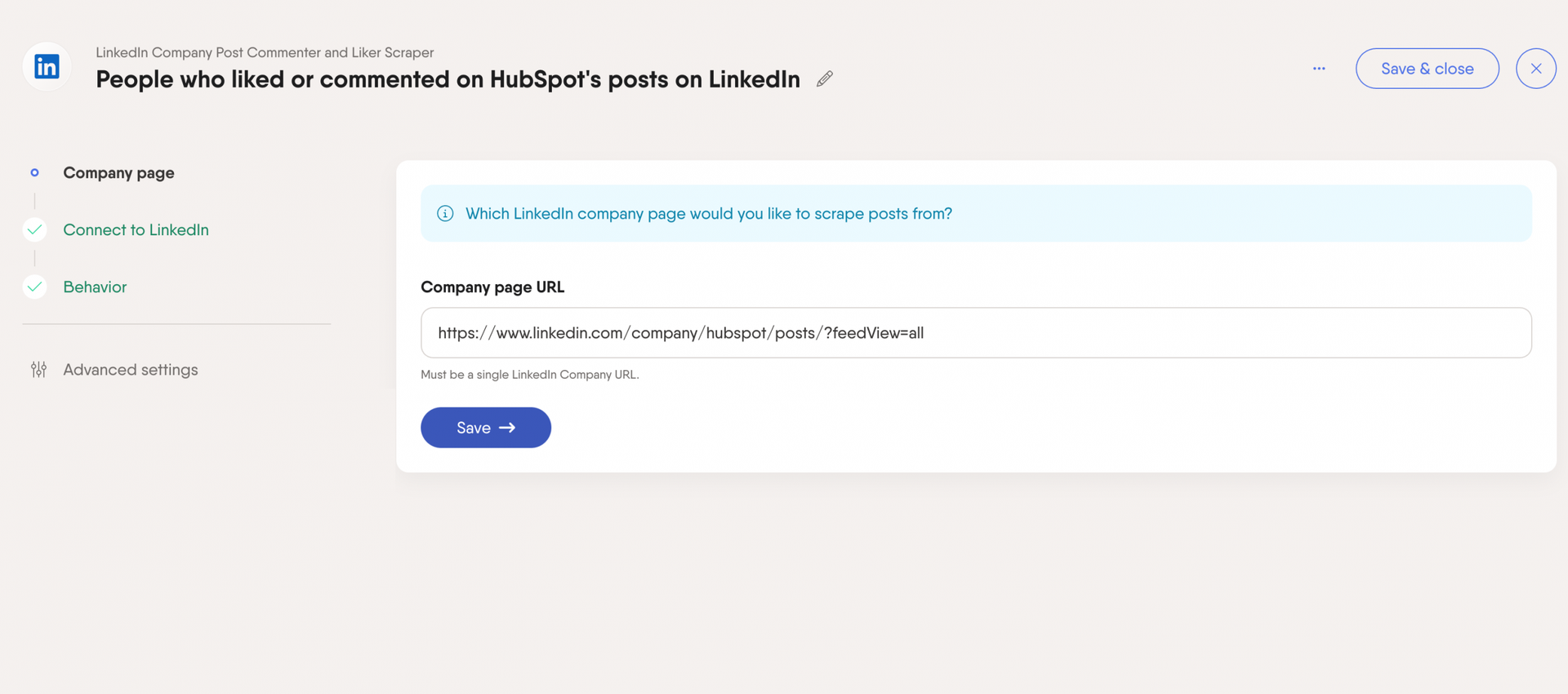
This lets sales and marketing teams build a warm outbound strategy, targeting leads who have already shown genuine interest and keeping your outreach highly relevant.
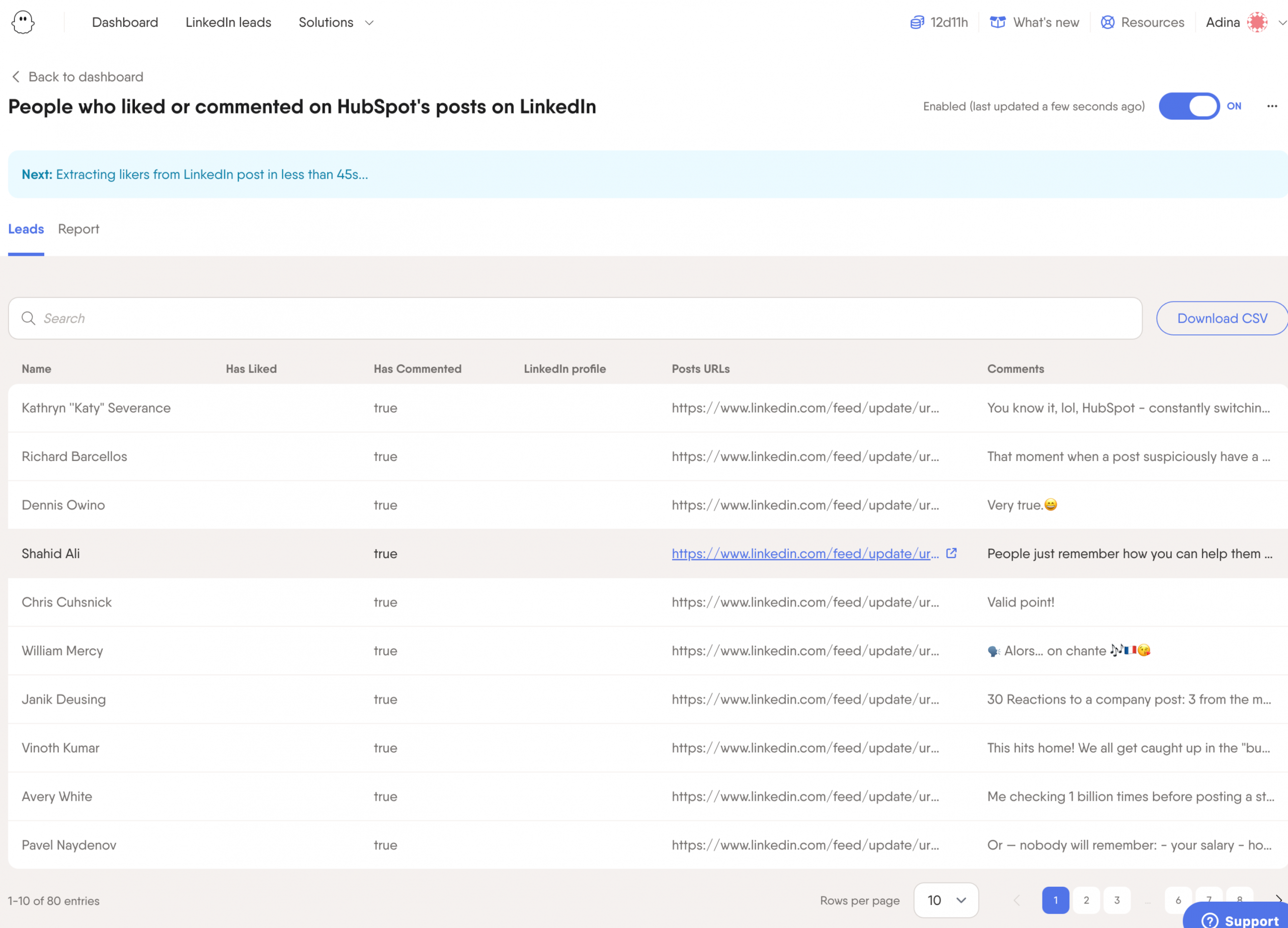
Prioritize your sales pipeline based on purchase intent data
To prioritize your sales pipeline using purchase intent data, start by scoring leads based on their engagement signals. This lets you focus on the most promising prospects rather than wasting time on cold leads with no genuine interest.
CRMs can track first-party data, but for deeper insights, use a tool like PhantomBuster to pull valuable third-party data such as likes and comments from relevant posts.
It gives you access to fresh information on who’s actively engaging with your industry’s content.
For example, you can export LinkedIn profiles for your list using the LinkedIn Profile Scraper, and then use the LinkedIn Activity Extractor to gather data on the latest activities of those profiles.
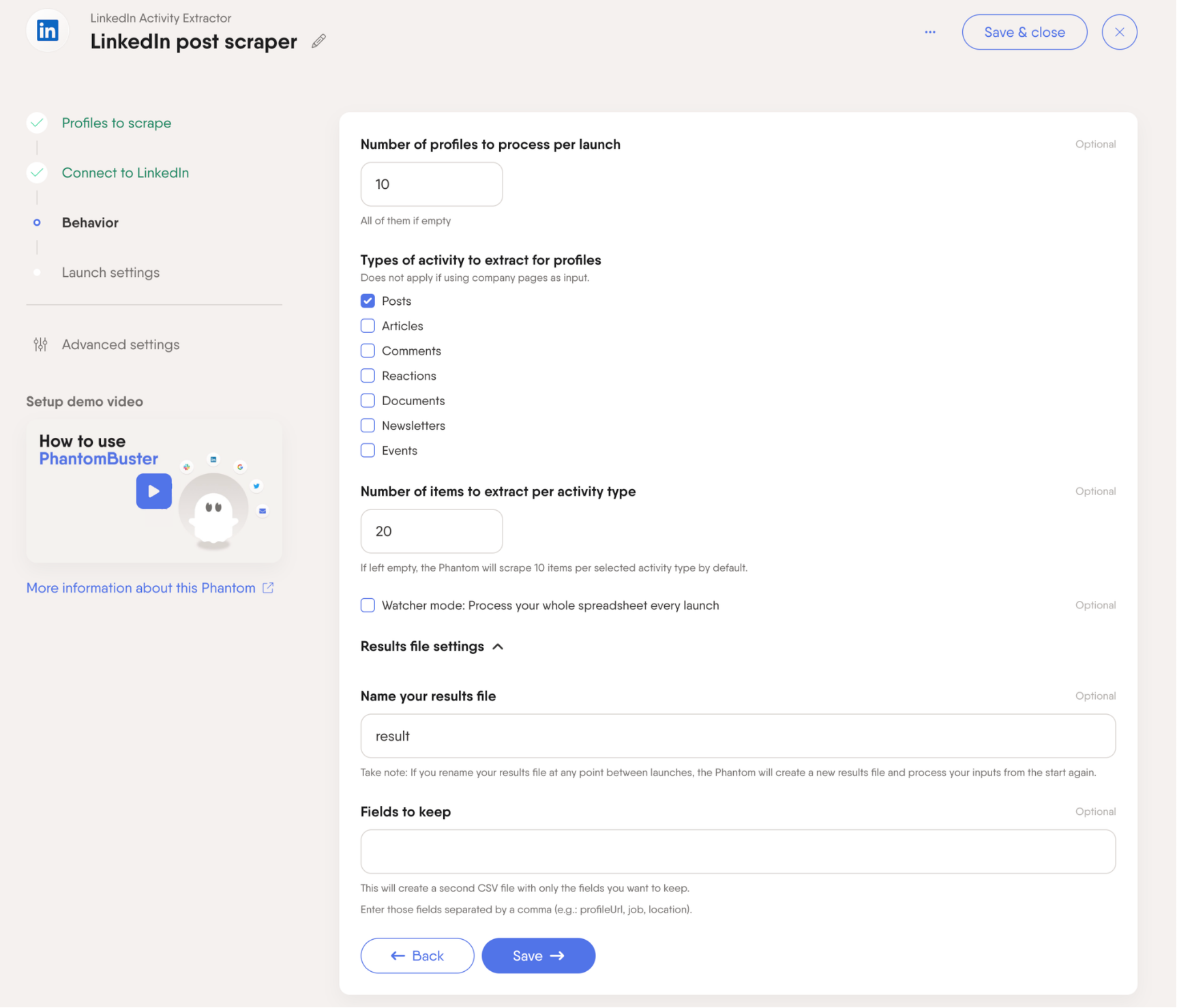
Personalize outreach based on intent data
To personalize outreach using intent data, you can leverage AI tools to craft tailored messages and engage meaningful conversations with your potential buyers.
Use the AI LinkedIn Message Writer Phantom to write highly specific messages that align with each prospect’s interests and recent engagement.
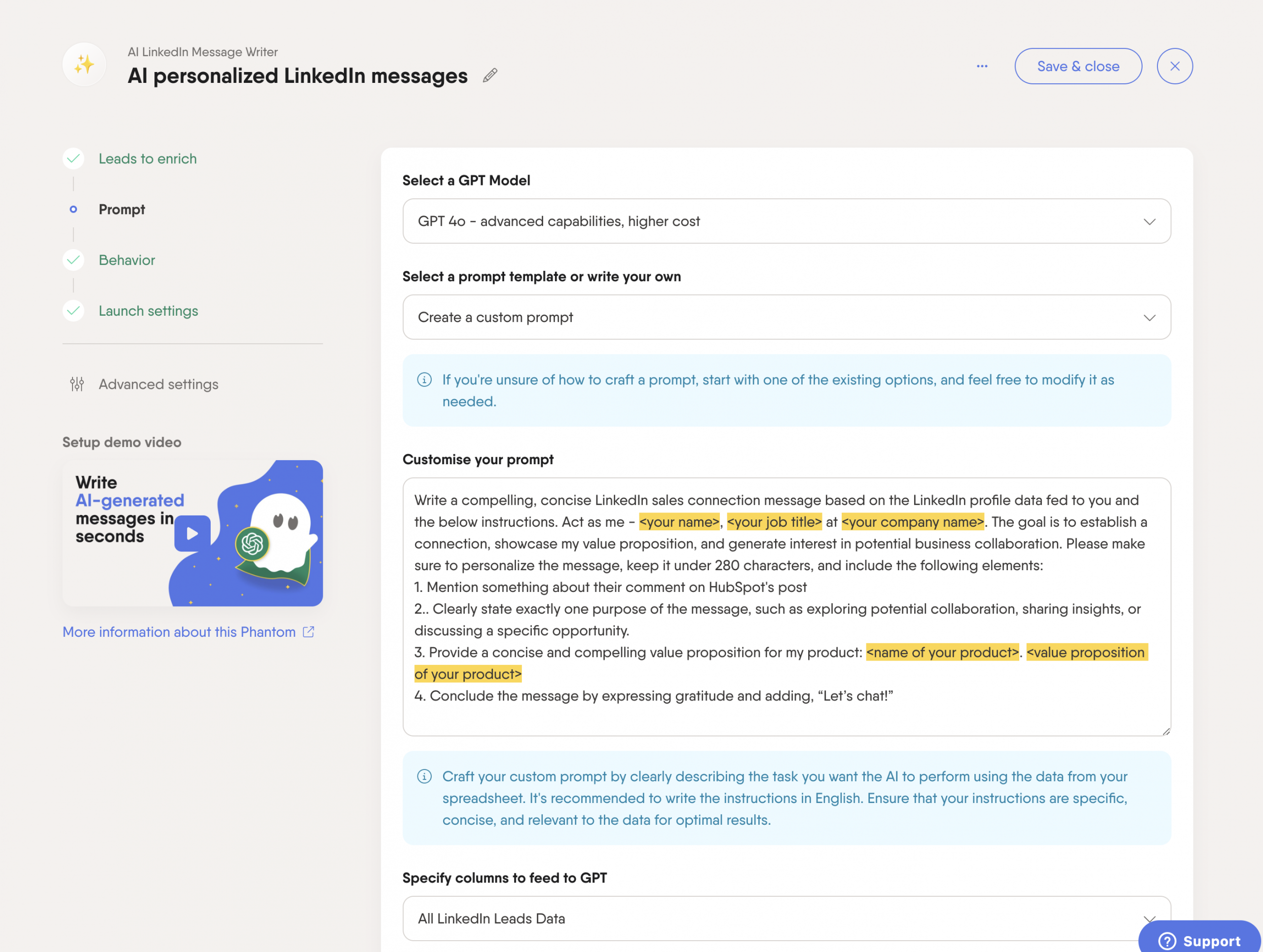
The tool will automatically create a tailored message for each of your contacts.
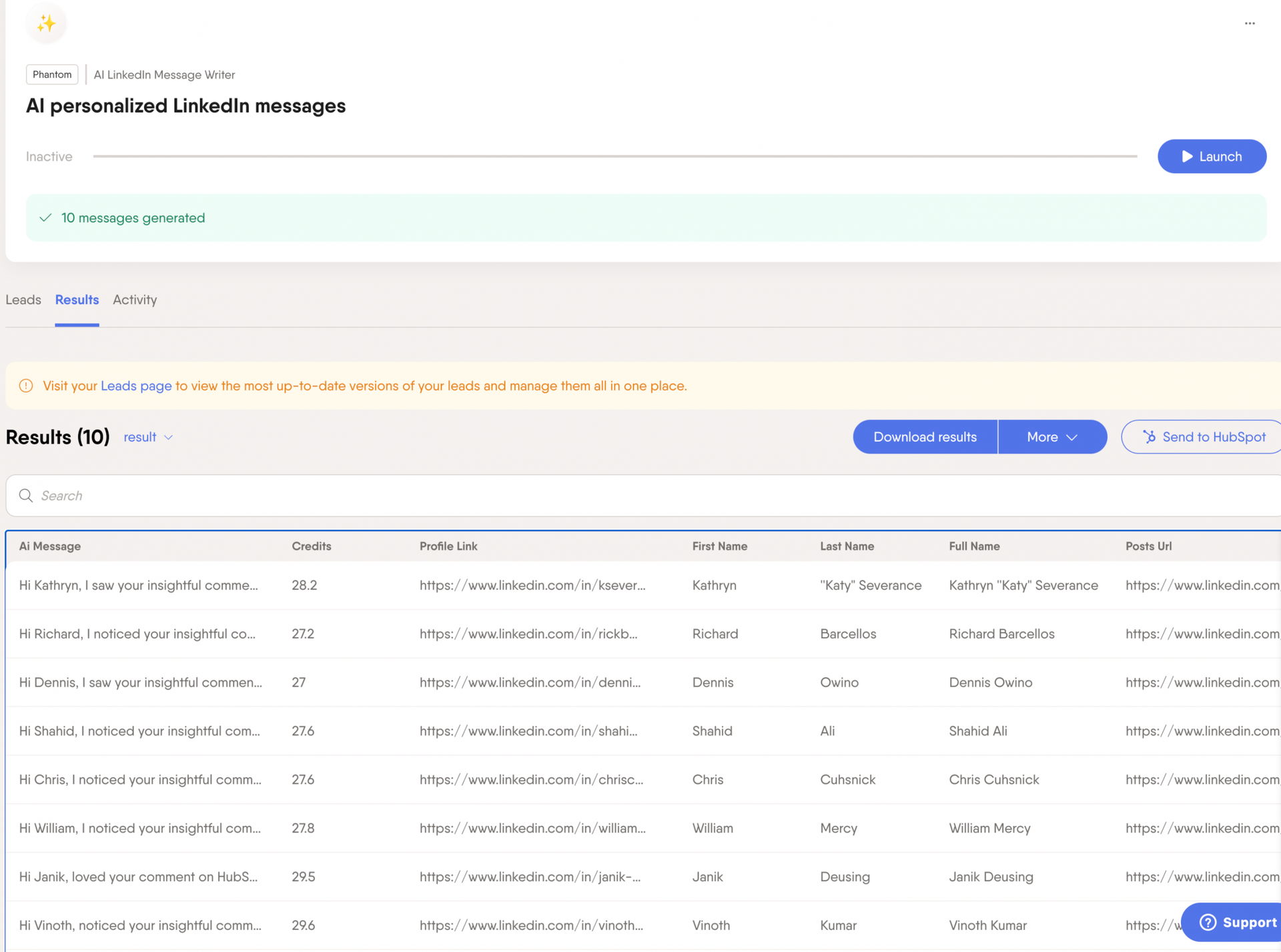
The final step is to automate these personalized messages on LinkedIn, helping you engage prospects based on real-time interactions and interests—without the manual effort.
You can use the LinkedIn Outreach Phantom to automate connection requests, introductory messages, and up to three follow-up messages.
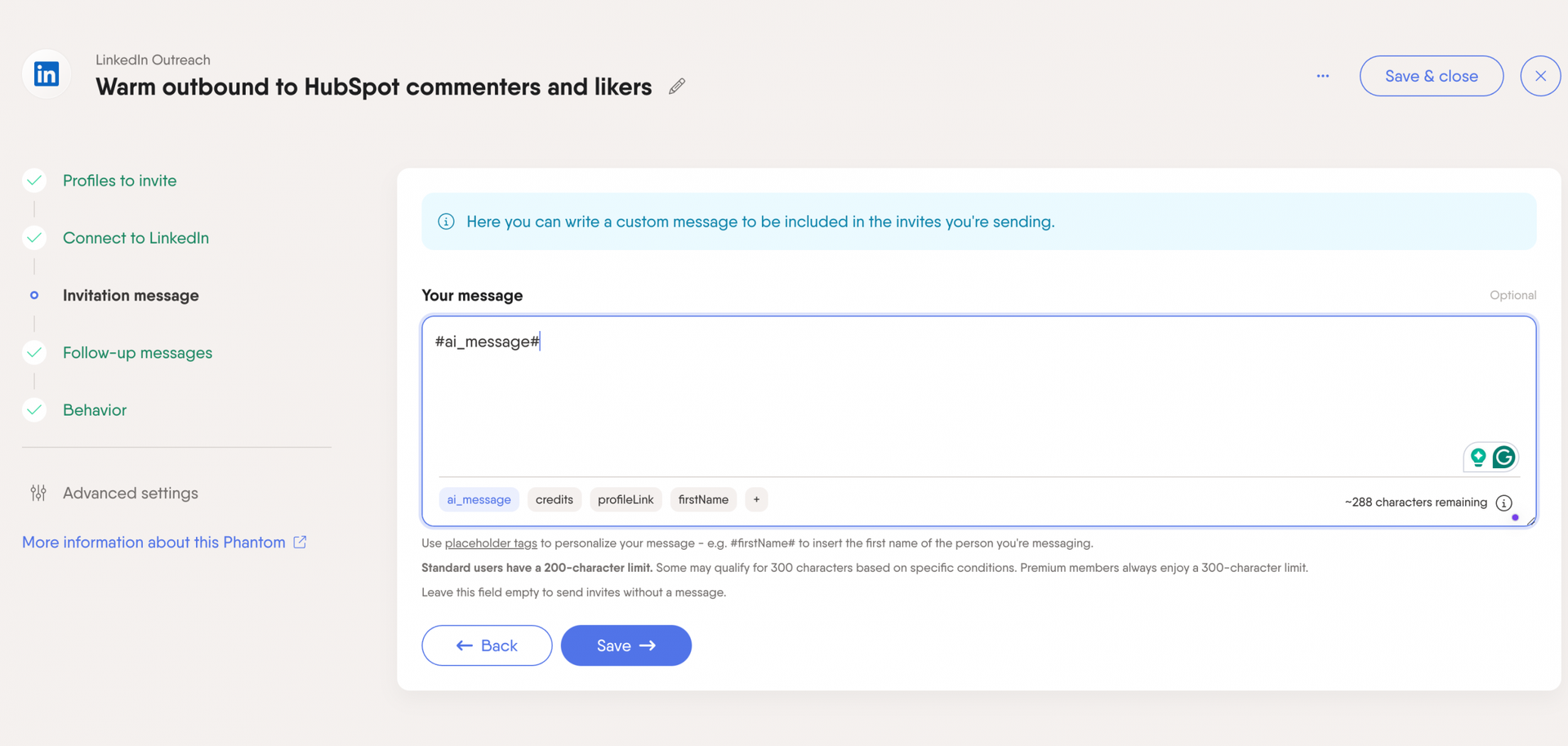
Build more detailed ICPs
To build more detailed Ideal Customer Profiles (ICPs), you need to go beyond basic demographic data.
With intent data, you can get deep into what your potential buyers actually care about—their pain points, interests, and how they engage with industry topics.
With tools like PhantomBuster’s AI LinkedIn Profile Enricher, you can take it even further. It analyzes a lead’s profile to identify their tone of voice, for example.
Then, you can craft messages that feel relevant and personal. It’s a smart way to make sure your message hits the mark and resonates with each lead on a deeper level.
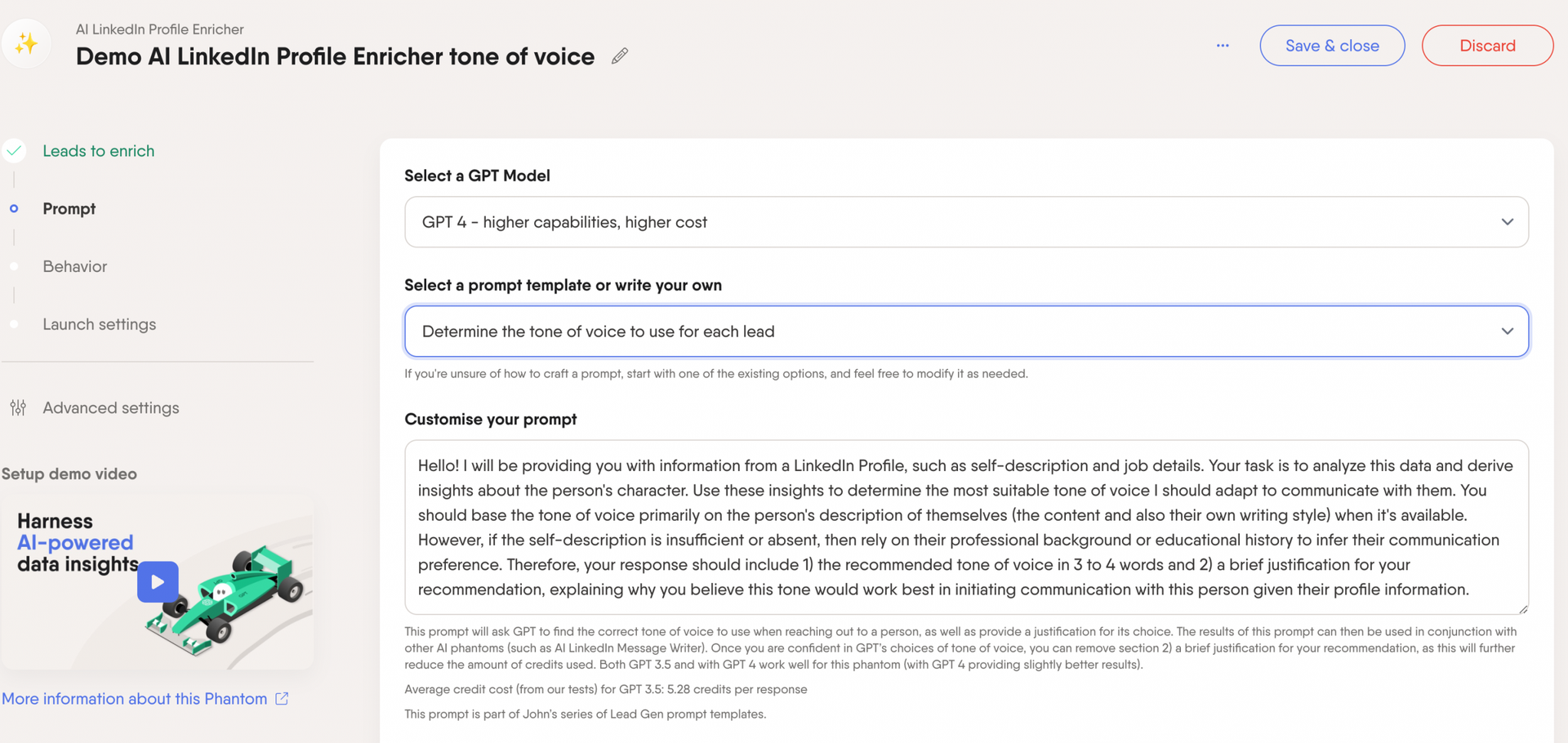
Improve website copy to increase acquisition
To improve your website copy and increase acquisition, focus on creating content that resonates with your target audience.
Use data-driven insights and make your messaging clear, concise, and value-driven. Address customer pain points directly and highlight how your solution solves their challenges. Avoid fluff or jargon—write in a way that speaks to your audience’s specific needs.
Also, test variations of your copy through A/B testing to optimize performance and increase conversion rates.
Build LinkedIn PPC audiences for ABM campaigns
Using LinkedIn PPC audiences for ABM campaigns allows you to run highly targeted ads based on intent data. With intent signals, you can show relevant content to the companies most likely to convert, maximizing your ad budget.
Instead of generic targeting, you’re serving ads to decision-makers who are already researching solutions like yours, driving more efficient lead acquisition.
This approach is perfect for content distribution too. Got a new report or case study? Push it to these high-intent leads and get it in front of the right audience at each stage of the buyer’s journey.
Keep refining your audiences to stay aligned with the latest intent data and ensure you’re always reaching engaged prospects.
Where to get buyer intent data?
Whether you’re looking to identify high-potential leads or enrich your CRM with detailed insights, it’s important to know where this intent data comes from and how to use it to your advantage.
Intent data providers
- ZoomInfo & Apollo: These platforms leverage their massive B2B databases to identify prospects based on intent signals like web searches, visits, and engagement. Your sales team can focus on leads actively seeking solutions that align with your offering.
- Bombora: Bombora’s co-op model aggregates B2B intent data from content syndication providers and publishers. It specializes in firmographics and purchase intent insights, letting you focus on companies actively researching products in your space.
- LeadIQ: LeadIQ captures real-time web traffic intent signals using bidstream data. This allows you to track user behavior across multiple digital touchpoints, giving insight into the online activities and the engagement of your potential buyers.
Prospecting and enrichment tools
To boost your prospecting and enrichment efforts, you can scrape and export real-time intent data from LinkedIn using specialized prospecting and enrichment tools.
They let you capture insights from likes and comments left by leads engaging with relevant content, giving you fresh, actionable data.
Here’s how PhantomBuster can help:
- Extract LinkedIn data: Pull detailed info from LinkedIn profiles, posts, and comments to gain deeper insights into your leads.
- Use bi-directional HubSpot integration: Start with a list in HubSpot, enrich it using PhantomBuster’s LinkedIn Profile Scraper, or export lists directly to HubSpot without manual updates.
- Email enrichment: Use services like Dropcontact, Hunter.io, or Snov.io to add and verify email addresses, keeping your data accurate.
- Manage multiple lists: Automate real-time data scraping for specific lead details, using PhantomBuster’s pre-built Phantoms.
- AI insights: Leverage the AI LinkedIn Profile Enricher to uncover key insights like pain points or interests, so you can personalize your outreach and start more meaningful conversations.
Conclusion
Intent data helps you focus on leads that are actively researching solutions like yours, giving your sales and marketing teams an edge.
Whether you pull data from providers like ZoomInfo or scrape LinkedIn with tools like PhantomBuster, intent signals keep your outreach targeted and effective.
Try PhantomBuster free for 14 days and get access to real-time intent data now!
